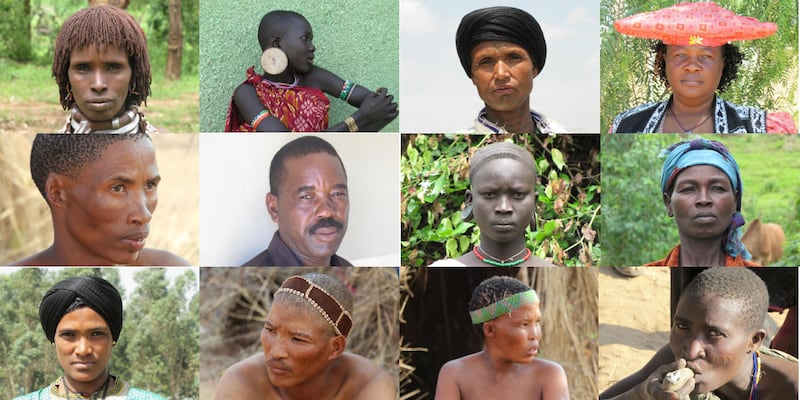Researchers have found several genes that dictate skin colour in a study that also dispels some old myths about the early humans.
Scientists from the University of Pennsylvania measured the melanin levels in the skin of more than 2,000 people in populations across Africa, and also tested DNA, to see what genes are associated with skin colour.
The SLC24A5 gene seems to have the biggest effect – and they found its light skin variant was common in Ethiopian and Tanzanian people who have ancestors from south-east Asia and the Middle East.
This indicates that light skin became common in east Africa after migration from those places.

Another gene they identified – MFSD12 – is also associated with vitiligo, a condition which prevents the body from consistently producing melanin.
“I still rememeber the ‘ah ha!’ moment when we saw this gene was associated with vitiligo,” said one of the paper’s authors, Nicholas Crawford, “that’s when we knew we’d found something new and exciting”.
Certain mutations in this gene were found in African populations with particularly dark skin, but also in some of the darkest skinned people outside the continent, like those in south Asian India and Australo-Melanesia.
Since they have the same version of the gene, people from these different areas may not have evolved dark skin separately, but instead modern humans might have migrated from Africa, along south east Asia and into Oceania.

To double check that these genes affected skin colour, the researchers knocked some of them out in mice and zebrafish.
When they got rid of the gene that is most active in dark-skinned populations, mice went from reddish yellow to completely grey.
So what does all this tell us about the origins of such a divisive physical trait so closely tied to race?
These scientists believe that instead of humans moving out of Africa and developing lighter skin to produce vitamin D better, the genes for light and dark skin evolved in Africa before humans migrated.

These genetic variants are older than we thought – some emerged a million years ago, long before modern humans did – and, surprisingly, the older ones are those associated with having lighter skin.
This isn’t that strange if you think about it, according to another of the paper’s authors, Sarah Tishkoff: “If you were to shave a chimp, it has light pigmentation so it makes sense that skin colour in the ancestors of modern humans could have been relatively light.
“It is likely that when we lost the hair covering our bodies and moved from forests to the open savanna, we needed darker skin.”
Their study was published in the journal Science and can be read here.








